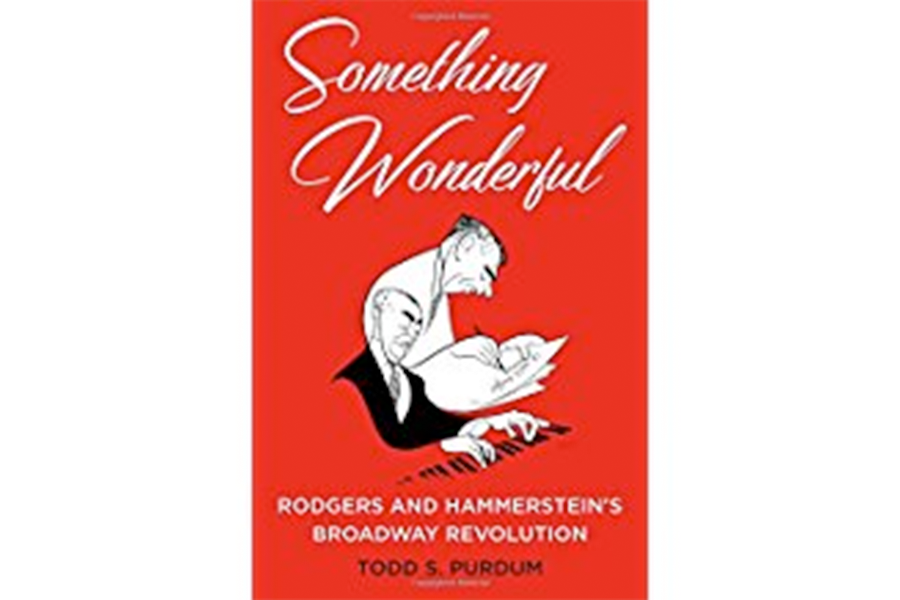'Something Wonderful' unpacks the magic behind Rodgers and Hammerstein
Loading...
The great Broadway critic and occasional gadfly Walter Kerr used to refer to the shaggy old concept of “Broadway magic” as an empty phantasm; “you're dressed in your finest,” he'd go on, “you've had your fill of Intermission champagne, you're elbow-in-elbow with somebody who may end up being the love of your life, the show is over but the evening is still young – of course you'll feel a 'magic' that isn't really there” – adding, almost parenthetically, “ … and sometimes it really is there.”
For 18 years during the heyday of Broadway, that magic was very real, and it had one concentrated source: the stunning collaboration of Richard Rodgers and Oscar Hammerstein, which is the subject of Todd Purdum's delightful new book Something Wonderful: Rodgers and Hammerstein's Broadway Revolution. The two, Hammerstein writing lyrics and Rodgers putting them to melodies, worked together to produce a string of hits (as Purdum puts it, “they delivered – time and time again”) that ended up garnering 34 Tony Awards, 15 Academy Awards, two Grammys, two Emmys, and two Pulitzer Prizes.
The roster of their shows is legendary – "Oklahoma!," "Carousel," "State Fair," "South Pacific," "The King and I," "Flower Drum Song," and of course "The Sound of Music," which critics initially faulted for being too similar in broad outline to "The King and I." Theater critic Kenneth Tynan, thinking of the similarities between the two shows, once imperishably described "The Sound of Music" this way: “This is Rodgers and Hammerstein devoutly engaged in nostalgic self-plunder: it was the last work they wrote together, and its flavour, on screen as on stage, is like that of a sugary, spätlese hock, left so long in the sun that it tastes like syrup.”
Which is precisely why Broadway hits are never made by critics. Audiences decide, and for show after show, audiences decided they loved the theatrical worlds Rodgers and Hammerstein created – as Hammerstein himself recalled even while the first negative reviews were raining down. “This is a hit,” he said at the time. “Just look and listen to that audience! They couldn't care less about the reviews. I promise you, this show is a smash hit!” "The Sound of Music" ran for 1,443 performances on Broadway. All of its songs became popular staples, and the show itself went into permanent regional revivals. The 1965 movie won five Oscars and took in millions at the box office, and a live 2013 TV production was watched by 18 million people.
The deepest fascination of Purdum's highly detailed account is the confident way it fleshes out the real people behind these stellar triumphs. Both Rodgers and Hammerstein could be prickly, brooding perfectionists; both dealt with depression, and Rodgers (the lesser liked of the two, generally) struggled with alcoholism his entire life. But they maintained a strictly courteous, even distant personal relationship, despite the fact that they were two drastically different craftsmen – Hammerstein was an inch-by-inch agonizer, whereas Rodgers could write a catchy tune very quickly and with seemingly no effort.
“It is difficult to describe the inner melodic and mathematical workings of music in mere words,” Purdum writes at one point, and yet he does a fine job, drawing readers into the spirited, gossipy world of Broadway theatrical productions – a world Rodgers and Hammerstein so drastically re-shaped that, as Purdum convincingly describes, it's borne their imprint ever since. “One need take only the briefest glances at the conventional Broadway fare that surrounded them at the beginning of their collaboration – and the flock of imitators that sprang up after their success,” he writes, “to recognize the radical nature of their innovations and the reach of their influence.”
From then on, dialogue, stagecraft, song, and dance would be welded together in order to add to the show's narrative, rather than each being off in their own corner doing its own thing. The actual story is changed by the great song-and-dance number of “The Farmer and the Cowman” in "Oklahoma!" In "The King and I," when Anna hears the song that gives Purdum's book its title, she learns something about the King in the process. It created a thrillingly new theatrical experience, and audiences loved it.
And audiences continue to love it. The 1996 Broadway staging of "The King and I" won awards and packed the Neil Simon Theatre. TV's "Sound of Music" was one of the most-watched programs in its network's history. This spring marks the 75th anniversary of "Oklahoma!," and "Carousel"revives on Broadway this month. That's Broadway magic if anything is, and Todd Purdum has given readers the most elaborate and entertaining exploration of that magic they're ever likely to read.






